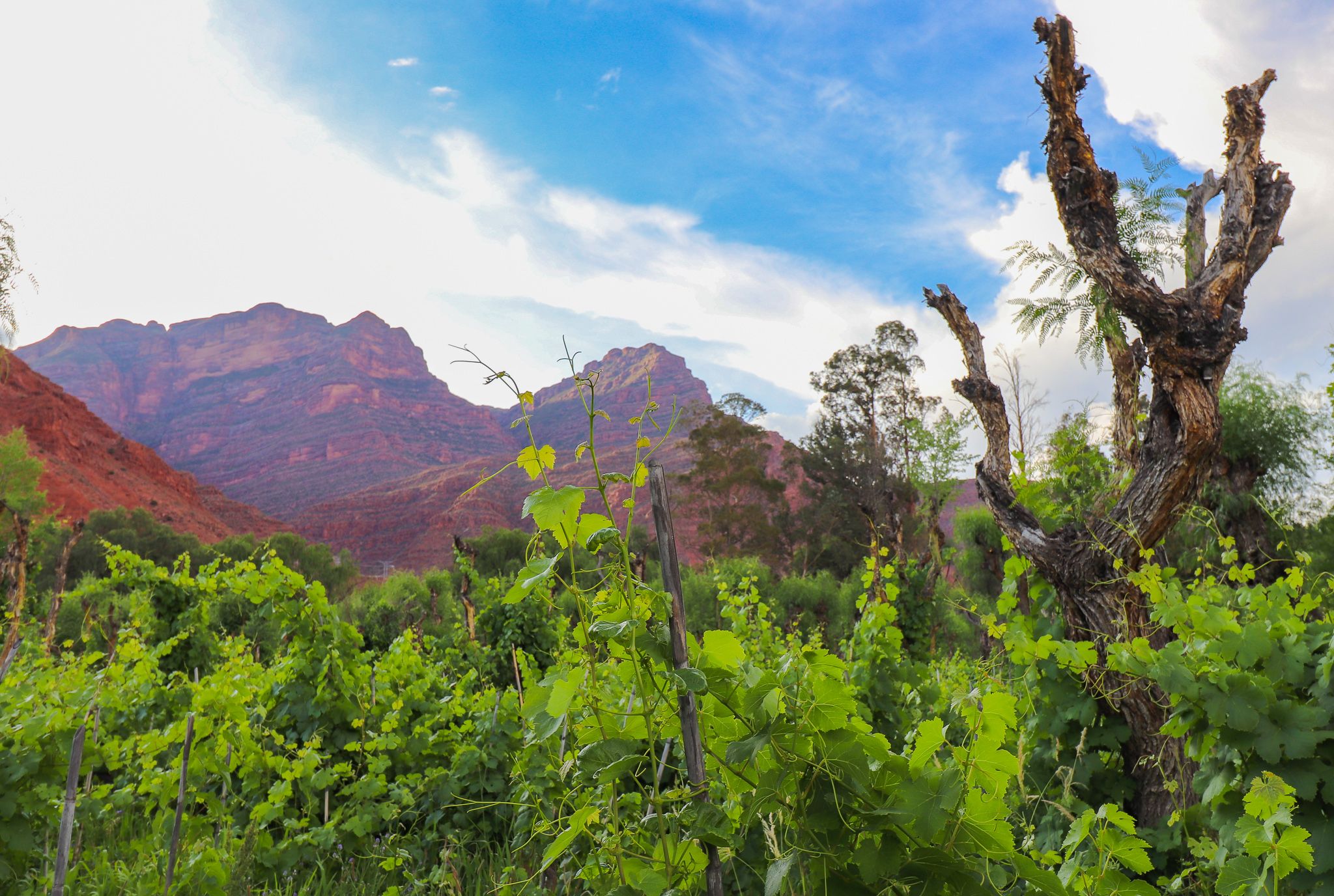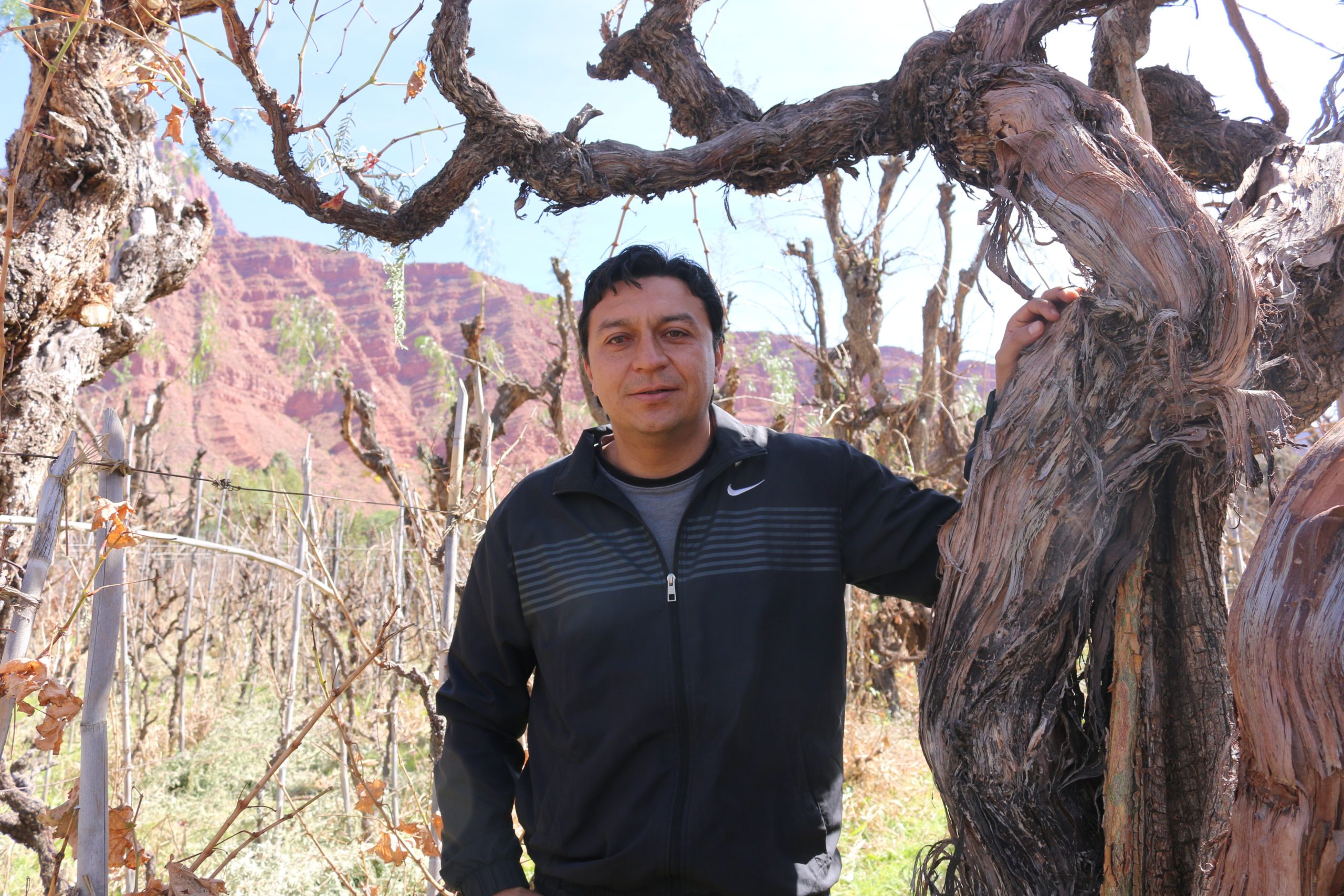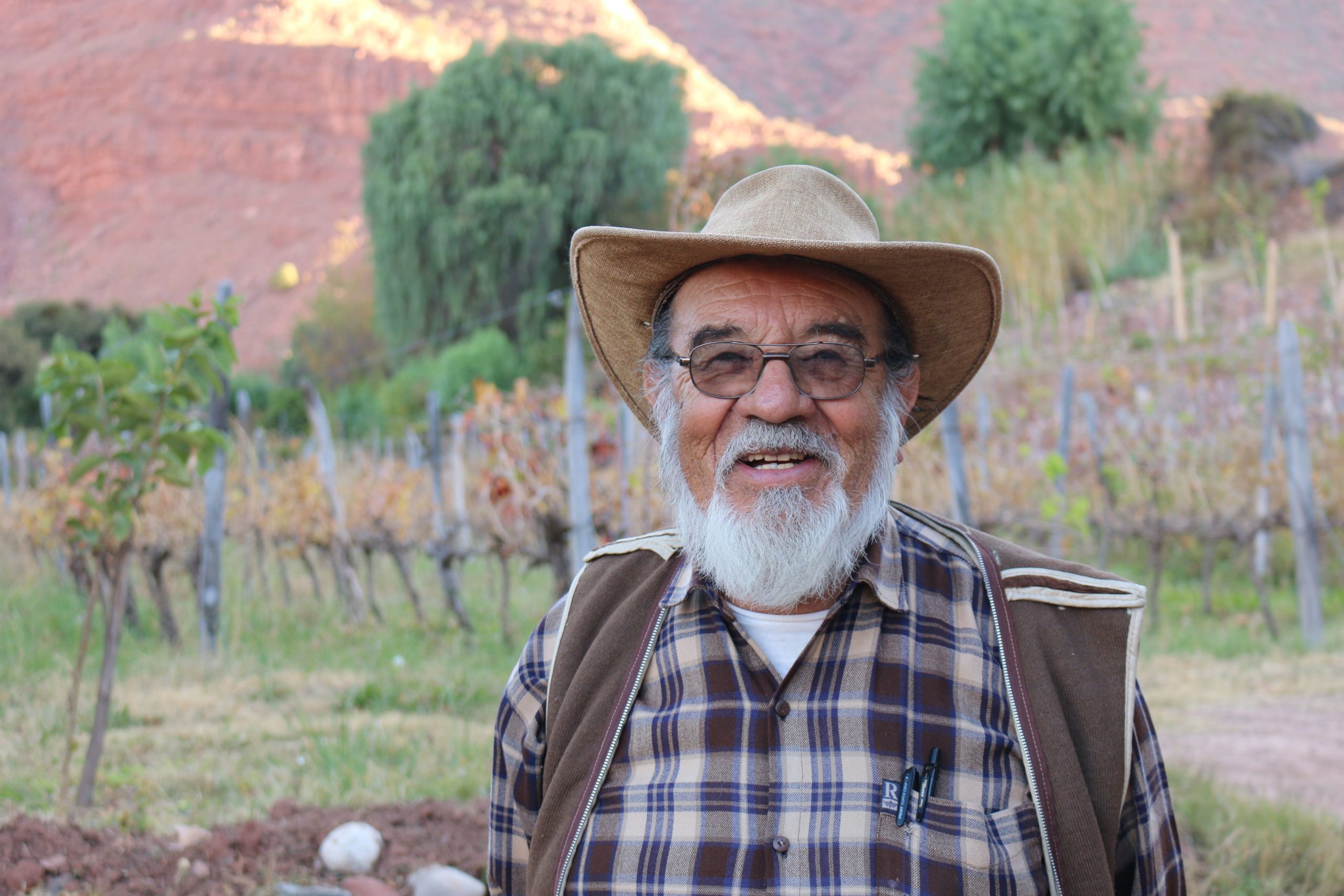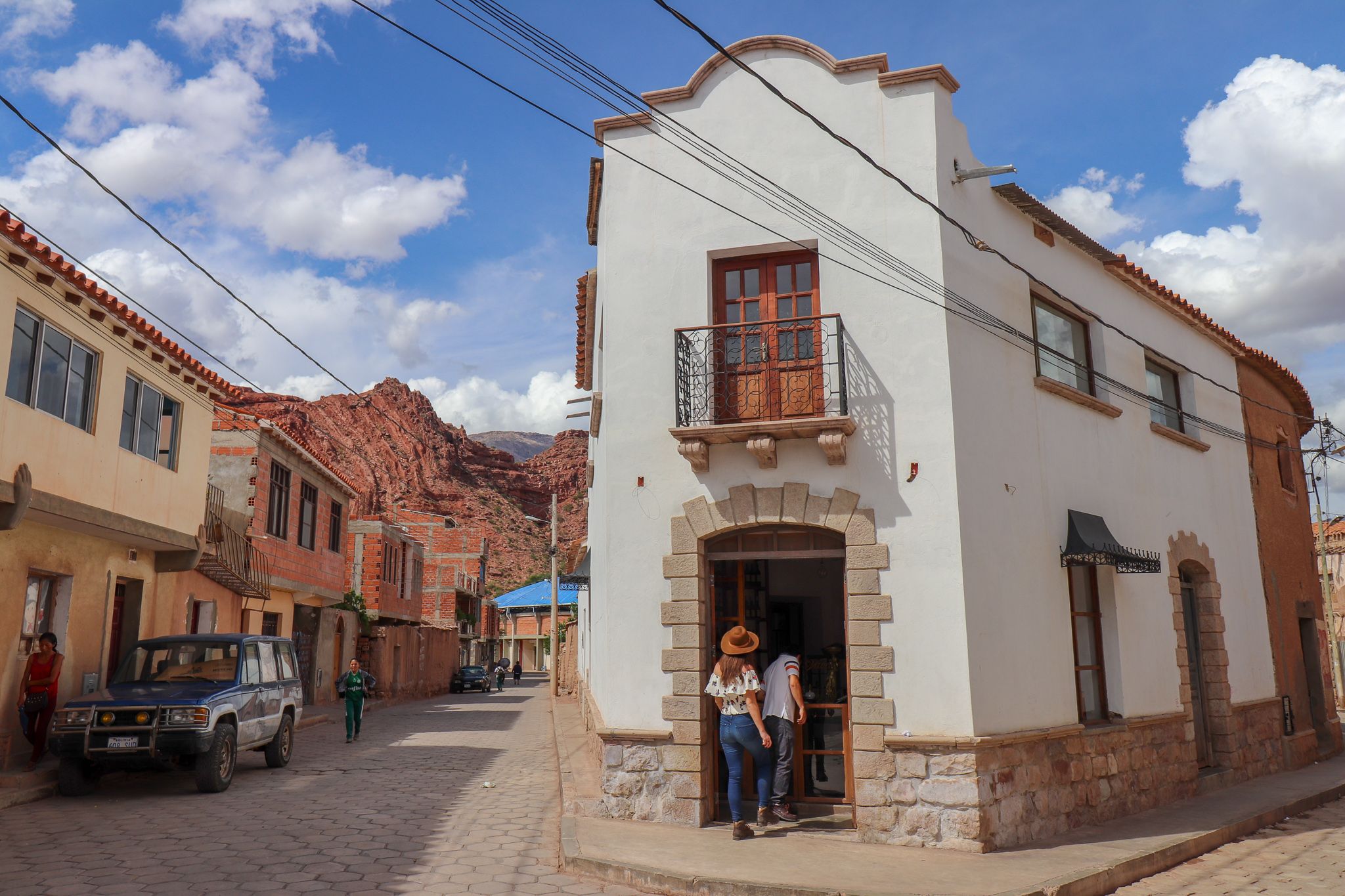Cinti Valley in Bolivia is one of the world’s most memorable wine regions: where vines grow up trees and are often well over 200 years old. It’s a stunning wine region in western Bolivia and a key part of the history of Bolivian wine as well as its future.
Overview of Cinti Valley
A Guide to Cinti Valley
Sub-Regions in Cinti Valley
Best Wines from Cinti Valley
Visiting Cinti Valley
Nowadays Cinti feels like the wild west of Bolivian wine production — isolated and untamed. But for over four centuries this historic valley was one of the heartlands of Bolivian wine and an important supplier for the thirsty miners of Potosí.
A natural oasis in the high-altitude desert plains, the Cinti Valley spans about 80 km in length by up to 5 km in width and is protected on either side by steep cliffs. The Cinti Valley is a canyon, created by an ancient fault line. To the west lie iron-rich red soils that are so colourful that this area was baptised El Cañon Colorado (“the colourful canyon”). On the eastern side, there are lighter-coloured soils with a mixture of calcareous, clay and sandy material. Two rivers run through the centre of the canyon — Río Grande and Río Chica — and vineyards are planted on the banks of both, and on both types of soils.
Although now three hours by road from both Potosí and Tarija, the Cinti Valley actually feels a whole world away from anywhere. It was only in the last decade that paved roads made their way here and so development has been blissfully subdued. From either direction, you pass through barren and wind-battered scrublands, where cacti, peppercorn trees and abandoned huts that once sheltered shepherds are the only signs of life until you reach the colourful canyon of the Cinti Valley.
It’s easy to see why this glowing ravine with its fresh mountain water became the weekend home of Potosí’s elite, a green idyll for the wealthy mine owners. Not only was the climate suitable for growing fruit and vegetables, but the clean air, moderate temperatures and lower altitude made it a wonderful respite from the harsh reality of the mining city.
In fact, the name Cinti is said to have originated from its curative properties. Many children died at birth in Potosí and so many women were sent to Cinti while they were ‘encinta’ (pregnant), so they could give birth there. Young children or anyone under the weather were also sent to the valley, where miracles were said to happen. A retreat to Cinti was often the doctor’s orders, and a glass of wine no doubt helped the medicine go down.
Although isolation hasn’t helped Cinti’s wine industry to modernise, in my opinion this has been a blessing in disguise. Cinti’s isolated location has made it a refugium for the ancient Criolla varieties and Bolivia’s most traditional viticultural and winemaking techniques. Old vines are commonly grown around old molle trees, just as the Spanish missionaries first planted them, which offer a firm frame for the vines to grow up, as well as providing protection from the sun, hail and wind. But, besides being a key structural component, which locals call the tutor, in the vineyards of Cinti, the leaves, flowers and fruit of the trees add a certain character to the wines, often expressed as peppery, floral or herbal notes.
Winemaking techniques are also charmingly artisanal with all of Cinti’s producers using boutique production techniques, preserving some traditions from hundreds of years ago. Using old barrels, native yeasts, manual punch-downs and hand-labelling wines is the norm here, as it is in boutique productions worldwide, but you’ll also some across some uniquely Cinti production techniques.
Take, for example, Marcelo Vacaflores, who makes his wines in century-old glass demijohns that were salvaged from the Potosí mines. These were originally brought over from England and used to carry hydrochloric acid and other corrosive mining chemicals. This is Bolivian up-cycling at its finest!
As with most of Bolivia’s wine regions, Cinti’s high altitude brings a big diurnal shift, making this a top terroir for naturally high acidity. The abundant sunshine is also somewhat mitigated by the steep mountain faces that line either side of the valley, which offer some protection from solar exposure for the grapes and allow for thinner-skinned varieties to also thrive — including perfumed white wines.
Although the natural conditions in Cinti are attractive, the cost of production is much less so. These are not vineyards that can be easily mechanised and all the work is done by hand here. As these are small, remote villages, this implies higher labour costs or more limited and easier-to-manage production, which is the case with Cinti’s artisanal producers. There also isn’t any room in the narrow valley to expand, so Cinti’s wines will always remain niche and pocket-sized in dimension, making this one of the best-defined valleys in terms of style and character.
As the landscape naturally lends itself to a delimited zone, it is unsurprising that Cinti became the first modern wine denomination in Bolivia. Since 2018, wine producers in Cinti have been able to become certified as part of the Cinti Valley Geographical Indication (GI) if they are located within the valley limits and producing wines from old vines of Moscatel de Alejandría, Negro Criolla or Vischoqueña, or Singani from Moscatel de Alejandría. Currently within the GI there are six producers (Cepas de Fuego, Cepas de Oro, Casona de Molina, Santa Lucía, Ocho Estrellas and Marcelo Vacaflores). There have been other international varieties grown in Cinti for the last four decades, but these historical Criolla varieties are the only ones recognised within the GI.
A growing reputation for the wines of Cinti in recent years has led to increasing interest in the zone, and many producers who used to be in Cinti but left during the crisis in the 80s are beginning to return and rediscover the treasures of this distinctive Bolivian wine valley. Some are planting international varieties, mainly red varieties such as Marselan. However, for me the most exciting wines being produced in Cinti today are those that respect and relish their unique tradition, native grape varieties and heritage as one of the oldest wine regions in the New World.
Cinti is a diamond in the rough, and a real joy for those who don’t like their wines too polished!
A Guide to Cinti Valley and the Wines of Bolivia
The Cinti Valley is split into the Northern Cinti Valley and the Southern Cinti Valley, which is why you’ll sometimes see it referred to in the plural – Los Cintis. Culturally most people just refer to it as one place, and so I’ve chosen to do the same, but politically it is often separated in two. The Northern Cinti Valley is only around 30 km from the Southern Cinti Valley.
NORTHERN CINTI: CAMARGO
Camargo is the main hub of Northern Cinti and although climatically it is very similar to Southern Cinti, there is slightly higher rainfall in Camargo and it is slightly higher in altitude, at an average of 2,410 m.a.s.l.
Notable Producers
SAN PEDRO
SOUTHERN CINTI: VILLA ABECIA, LAS CARRERAS
Villa Abecia is the main production hub of Southern Cinti although there are also numerous vineyards to be found further south in Las Carreras, which is just a stone’s throw from the Tarija border. Villa Abecia’s vineyards are at an average altitude of 2,320 m.a.s.l. while Las Carreras is closer to 2,220 m.a.s.l.
Notable Producers
- Watch our video interview with Jaime Rivera in the vineyard talking about his 200 year old vines.
One of the most distinctive varieties being made in Cinti is undoubtedly Moscatel de Alejandría and it really shone in our panel tasting as not only the most interesting variety from Cinti, but also from Bolivia as a whole. Old-vine Criolla varieties, including Moscatel, are what deliver the best Cinti terroir expression and our award winners below are worthy champions from the region. All of them are small-scale artisanal productions; most of them are natural wines, and each one reflects not only Cinti, but also the personality of its producer.
TIERRA ROJA, Los Infinitos Moscatel de Alejandría 2017
Cinti Valley. $. Drink until 2022
Tierra Roja is a boutique winery; the pride and joy of the Villamor family. This mouth-watering wine is an excellent example of how vibrant the acidity of Bolivian Moscatel de Alejandría can be. Herbal and spicy notes add complexity to this otherwise floral, fresh and crunchy wine. Delicious.
CEPAS DE FUEGO, Moscatel de Alejandría 2018
Cinti. $. Drink until 2022
You can tell a Cepas de Fuego Moscatel a mile off. Whether it is due to the 2,300+ metres of altitude, the hand of winemaker Weymar or the location of the vineyard at the foot of the coloured canyon, this is a wine that abounds with mineral and earthy notes. Savoury, full-bodied and long.
VACAFLORES ‘SAN FRANCISCO DE LA HORCA’, Moscatel de Alejandría 2018
Cinti. $. Drink until 2022
This delicate style of Moscatel de Alejandría comes from fourth-generation producer Marcelo Vacaflores. Fresh fruit notes mingle with dried chamomile flowers and honey, and the finish is bright and elegant. An aperitif wine or enjoy with local Andean cheeses.
VACAFLORES ‘SAN FRANCISCO DE LA HORCA’, Torrontés 2017
Cinti. $. Drink until 2022
High-altitude Torrontés is a gem, not just in Argentina, but also in Bolivia. This expression of Torrontés from the Vacaflores family has the aromas of the wildflowers, herbs and peppercorn so widely found in the fragrant valley, along with a lingering, honeyed finish. Expressive and distinctive.
CEPA DE ORO, Tradición Cintena Vischoqueña 2018
Cinti. $. Drink until 2025
This native grape variety could be considered Bolivia’s own version of Pinot Noir, with its abundant bright red cherry and blue floral aromas. Vibrant, refreshing acidity and crunchy red fruit with fine tannins. Fourth-generation winemaker Jaime and his family have become champions of this little-known variety, making a fresh rosé wine too.
JARDIN OCULTO, Negra Criolla
Cinti. $. Drink until 2022
This is a really fresh, young and modern style of Negra Criolla (aka Listán Prieto) from boutique producer Jardín Oculto. This unfiltered wine abounds with fresh red fruit aromas and floral perfume, and has a crunchy finish. Ideal chilled and dangerously gluggable!
CEPA DE ORO, Misionera 2018
Cinti. $. Drink until 2023
Grown in their beautifully wild vineyard filled with trees and old Criolla vines, this Misionera expresses the complexity of the terrain and shows the great potential of this ancient variety. Dark fruit, floral and wild herb aromas with fine tannins and a smooth finish. A great food wine.
TIERRA ROJA, Cabernet Sauvignon 2018
Cinti. $. Drink until 2025
Unlike any Cabernet Sauvignon you’ve ever tried before, this wine takes on true Cinti character — with delicate notes of peach, wild herbs and red fruit. It’s incredibly aromatic with a vibrant, juicy and refreshing finish. In the case of this biodynamic family vineyard, terroir trumps variety!
The Cinti Valley spans about 80km in total, making it a really easy valley to visit within a couple of days. The two major towns of Cinti, Villa Abecia and Camargo, are about 30 minutes from each other and each offers a different Cinti perspective with several wineries open for tourism.
Camargo is the slightly more chaotic town of the two with narrow streets and tall houses, but it’s easy to navigate and short in its expanse. Do visit the historic winery of San Pedro, where you can distill your own Singani.
Villa Abecia is a rather more charming little town with a picturesque plaza. There are a handful of small hotels, including Cepas de mi Abuelo — a family-run operation with a Singani distillery in the garden. The owner, Manuel, is a retired Bolivian pilot who will happily divulge some of his interesting flying anecdotes over a few glasses of his wine or Singani, or with a visit to his organic vineyard, where a herd of 50 goats works the land.
Each summer both Camargo and Villa Abecia have their own Fiesta de Vendimia (Harvest Festival) in late February, where you are guaranteed a cheerful knees-up and true Bolivian hospitality.
How to get around
- Camargo is a 3.5 hour bus ride from Potosí and 2.5 hours from Tarija, both of which have airports. Hiring a driver from Tarija (around US$80 a day) is the most comfortable option, although the ‘exhilarating’ driving speed won’t allow for much shut-eye in the back of the car… Car rental companies are available in Tarija and the drive is windy but beautiful.
Where to eat & drink
- There are lots of small, homely eateries in both villages, and often the wineries will offer homemade cuisine as part of the visit.
Where to stay
- Cepas de mi Abuelo (Villa Abecia) is a charming, family-run B&B with a pool, garden, WiFi and BBQ area for evening shows and meals.
Want to know more about Cinti Valley and the wine regions of Bolivia?
ORDER YOUR COPY of The South America Wine Guide now!
E-book AVAILABLE ONLINE too




